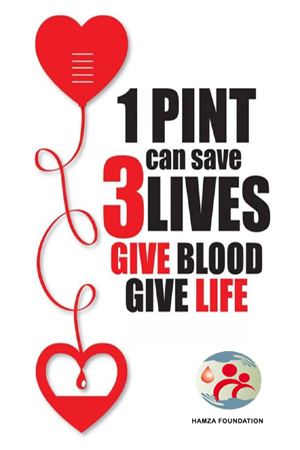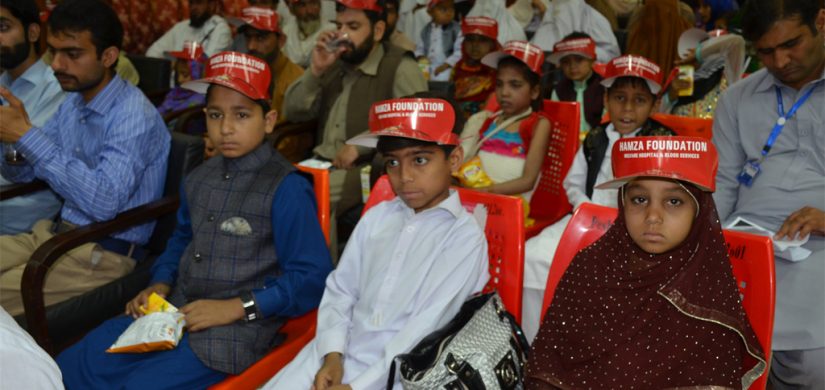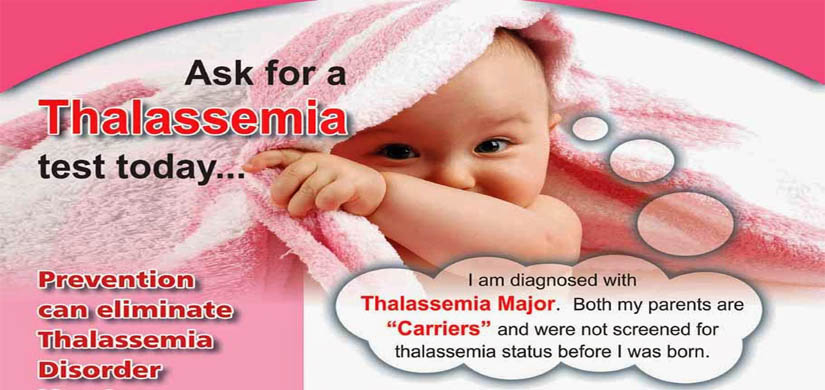What is Thalassemia?
Thalassemia is a genetic blood disorder in which a patient cannot make enough Red Blood Cells and needs to be supplemented with RBC transfusions every 2-3 weeks to stay healthy and to survive. Thalassaemia is an inherited disorder that leads to the decreased production and increased destruction of red blood cells. This causes very low levels of hemoglobin or none at all. Hemoglobin is the red pigment in red blood cells that carries oxygen through the body to all of the organ systems. The loss of red blood cells leads to anemia and the inability of the body to deliver needed oxygen to maintain normal body function. Thalassemias are also categorized by the number of genes that are defective: Thalassemia minor–one abnormal gene (only one Parent) Thalassemia major–two abnormal genes (both Parents) Causes: An imbalance in the alpha and beta globin chains necessary for the production of hemoglobin is caused by the inheritance of abnormal genes. Abnormal genes must be inherited from both parents to develop the disease. If one gene is inherited, the person will be a carrier of the disease, but will not have symptoms. People with thalassemia trait carry thalassemia, but they are not ill. They are healthy and normal, however, some may have slight anemia. Thalassemia trait is present at birth, it remains the same for life, and it can be handed down from parents to children. People with thalassemia trait also have slightly more hemoglobin called hemoglobin A2 in their blood.
Thalassemia Major:
This is a very serious blood disease that begins in early childhood. Children with thalassemia major are normal at birth but become anemic between the age of three months and eighteen months. They become pale, do not sleep well, do not want to eat, and may vomit frequently after feedings. If thalassemia major goes untreated, children usually die between one and eight years of age.
Symptoms:
Symptoms of thalassemia usually begin within 3-6 months of birth. Symptoms may include: Anemia, which may be mild, moderate, or severe Yellowish discoloration of the skin, tissues, and body fluids Jaundice Enlarged spleen Fatigue (tiredness) Listlessness Reduced appetite Enlarged and fragile bones, including: Thickening and roughening of facial bones Bones that break easily Teeth that don’t line up properly Growth problems Increased susceptibility to infection Skin paler than usual Hormone problems such as: Delayed or absent puberty Diabetes Thyroid problems Heart failure Shortness of breath Liver problems Gallstones
Diagnosis:
The doctor will ask about your symptoms and medical history, and perform a physical exam. Blood tests may include: Complete Blood Count Blood Smear Hemoglobin Electrophoresis Quantitative Hemoglobin Analysis Iron Levels
Treatment:
Treatment may include: Blood Transfusions You may require blood transfusions to replace abnormal red blood cells with healthy new ones. Iron Chelation Therapy Excess iron can accumulate in the body after repeated blood transfusions. Too much iron can damage the heart, liver, and other vital organs (secondary hemochromatosis). A drug call deferoxamine (Desferal) can be given to bind to excess iron in the body and carry it out through the urine. This drug is given through the skin or by vein using a small infusion pump. Splenectomy In some cases, surgically removing the spleen may help reduce the number of blood transfusions that are needed. Bone Marrow Transplant Healthy stem cells from a donor’s bone marrow are injected into the patient’s vein. The new cells travel through the bloodstream to the bone cavities, where they can produce new blood cells, including red blood cells. This is usually only done in severe cases. A compatible sibling donor is required. Prevention: Testing For Thalassemia A SIMPLE Blood Test before marriage called Hb ELECTOPHORESIS / Hb A2 will tell you whether you are a carrier or have a trait of thalassemia minor. During Pregnancy there are three ways to test the foetus for thalassemia status: CVS – Chorionic Villius Sampling (done in 8-10 weeks of pregnancy) Amnicentesis – done in 14-18 weeks of pregnancy Fetal blood Testing: Fetal blood from the umbilical cord of the foetus in the womb (done in 18-20 weeks of pregnancy)






